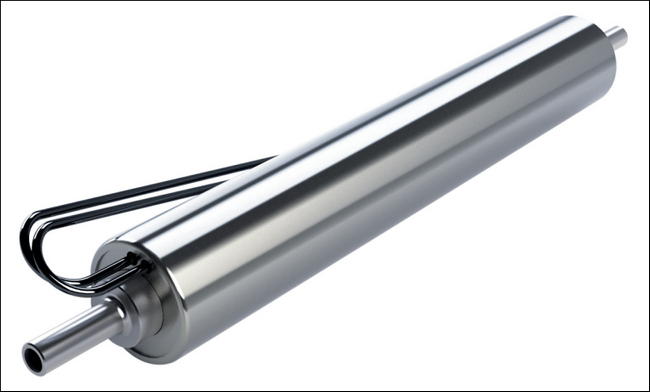Semiconductor fabrication creates a number of waste gases, which can be corrosive, pyrophoric and potentially explosive. Often, diluting these gases with nitrogen (N2) is an early step in the abatement process to make sure the gases stay below the lower explosive limit (LEL) or reduce corrosive effects. However, the use of nitrogen can cause condensation and deposits, as well as leak out of the system. Here, Rob Johnston, director of the end user business segment at industrial electric heater manufacturer Watlow, explains how this can be prevented.
Abating hazardous gases
One way to abate hazardous gases in process exhaust streams is to dilute them using a less harmless gas. In semiconductor fabrication, nitrogen gas is often used because it is readily available and effective at diluting more hazardous gases prior to other abatement steps.
A good example of this solution can be seen with potentially explosive gases, such as hydrogenated gases. These gases have an explosive range, a specific range of gas concentrations where explosion is likely to occur. Gas concentrations must be kept below the lower explosive limit (LEL), which is the minimum concentration of gas needed to reach this explosive range. But mixing with nitrogen lowers the ratio, making the gas too lean to pose an explosion risk.
That said, when introducing a new gas into the exhaust stream, condensation can cause issues by creating deposits in the system. This eventually creates clogging, leading to unplanned downtime. The addition of nitrogen poses a dilemma, forcing plants to choose potential line shutdown in order to ensure safety — a trade-off no one wants to make.

An alternative solution
If adding room-temperature nitrogen into a waste stream causes condensation problems, heating the nitrogen can be a sufficient remedy. However, getting nitrogen to temperature has proven to be a tricky engineering problem.
One of the biggest issues is with nitrogen leaks. Introducing a heater into the system can potentially create another place where nitrogen can leak, meaning that not all the nitrogen gets into the waste stream for abatement. If the leak is severe enough, the hazardous gases will not be diluted enough to ensure safety. This means that a potentially explosive gas might still be well within its explosive range.
There is limited space that can be taken up within an existing an abatement system, which limits the number of components, controllers and wires that can be added to the system, especially in multi-chamber setups.
The no-leak last resort
To overcome these challenges, a compact, no-leak heater design can ensure the reliability of exhaust abatement systems in semiconductor fabrication. For instance, Watlow’s FLUENT® in-line heater is designed to allow movement of a fluid or gas over the heater surface without any loss of the fluid or gas through the outer shell.
A no-leak design not only includes a seamless stainless steel outer protection tube, but it also has the heating elements sitting outside of the fluid flow path. As a result, neither the elements nor the wiring penetrate the gas flow path, mitigating the need to weld components in place and thereby create areas where gas can escape. This design ensures that all nitrogen gas is passed along into the process, preventing any from escaping into the sub-fab.
With no leaks present, the correct mixture of gases can be assured, meaning that semiconductor manufacturers no longer need to trade-off between safety concerns and possible downtime caused by the need to flush clogged exhaust systems.
A first step in the abatement of waste gases in semiconductor fabrication should be dilution with nitrogen gas. However, engineers must consider the issues that can arise and consider opting for a solution that covers all potential issues associated with nitrogen heating. In this case, a design that is modelled around eliminating leakage can prevent clogging and downtime.
For more information about the FLUENT® heater, go to watlow.com
About Watlow:
Watlow is a global industrial technology company that uses its world-class engineering expertise, advanced thermal systems and manufacturing excellence to enrich everyday life. Many of the world’s leading companies leverage our technology in vital applications such as semiconductor processing, environmentally-friendly energy solutions and lifesaving medical and clinical equipment, to name a few. Founded in 1922, Watlow’s culture is driven by our purpose of “Enriching Lives Through Inspired Innovation,” enabling us to deliver high-impact solutions that improve our customers’ competitive advantage.
